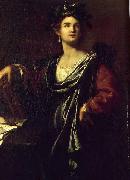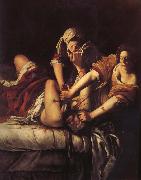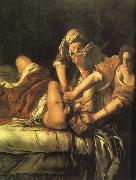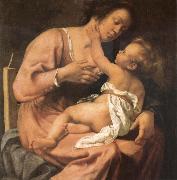All Artemisia gentileschi's oil paintings


|
|
|
| ID |
Image |
Oil Pantings, Sorted from A to Z |
Other Information |
| 86034 |
 |
Artemisia Gentileschi |
Date 1621(1621)
Medium Oil on canvas
cjr |
| 76342 |
 |
ArtemisiaSelfP |
Oil on canvas, 96,5 x 73,7 cm
cjr |
| 87814 |
 |
Bathsheba |
Date c. 1636(1636)
Medium Oil on canvas
Dimensions 104.5 x 82.5 in (265.4 x 209.6 cm)
cjr |
| 95453 |
 |
Bathsheba |
first half of 17th century
Medium oil on canvas
cyf |
| 93319 |
 |
Cleopatra |
oil on canvas
cjr |
| 68569 |
 |
Clio |
1632 |
| 71812 |
 |
Clio |
127.6 x 97.2 cm.
Date 1632
|
| 74625 |
 |
Dimensions and material of painting |
Dimensions and material of painting: Oil on canvas, 30 x 28 in
cjr |
| 76510 |
 |
Dimensions and material of painting |
Dimensions and material of painting: Oil on canvas, 37 x 56.75 in
cjr |
| 70673 |
 |
Esther before Ahasuerus |
Medium Oil on canvas
Dimensions 208.3 x 273.7 cm
|
| 56586 |
 |
judir och holofernes |
mk248 malningen illustrerar bur den judika bjaltinnan fudut balsbugger den assyriske faltberren holofernes ocb ger kraftfullt uttryck for konstnarens egna kanslomassiga turbulens. realismen ocb den dramatiska cbiaroscuron ar val i klass med caravaggios eller ruvens. gentilescbi malade fem versioner till det var tydligen ett tema som i synnerbet tilltakade florentinarna, som ofta botades av maktigare. for konstnaren var fet en bekraftelse pa kvinnlig styrka i alla slags nitgangar. |
| 53784 |
 |
Judit drapes Holofernes |
mk234
ca 1612-21
200x163cm |
| 28999 |
 |
Judith and Her Maidser |
mk65
Oil on canvas
44 7/8x36 13/16in
|
| 72235 |
 |
Judith and Her Maidservant with the Head of Holofernes, |
Judith and Her Maidservant with the Head of Holofernes, oil on canvas, The Detroit Institute of Arts, USA
cjr |
| 42698 |
 |
Judith and Holofernes |
MK169
ca. 1620 Cloth 199x162.5cm Uffizi, Florence |
| 30545 |
 |
Judith Beheading Holofernes |
mk68
oil on canvas
Naples
Capodimonte Museum
1611-1612
Italy
|
| 94806 |
 |
Judith Slaying Holofernes |
c. 1611-12
Type Oil on canvas
Dimensions 158.8 cm x 125.5 cm (62.5 in x 49.4 in)
cyf |
| 71434 |
 |
Lot and his Daughters |
Date 1635-1638
Medium Oil on canvas
Dimensions 230.5 x 183 cm
|
| 29000 |
 |
Mary Magdalen |
mk65
Oil on canvas
57 11/16x42 1/2in
Pitti,Palatine Gallery
|
| 58486 |
 |
Possehl between East and Athena |
mk261 one mid-century AD 5.1 x 4.2 cm |
| 26794 |
 |
Self-Portrait as an Allegory of Painting |
mk52
c.1635-7
Oil on canvas
98.6x75.2cm
|
| 59020 |
 |
Susanna and the Elders, Schonborn Collection, Pommersfelden |
Susanna and the Elders, Schönborn Collection, Pommersfelden |
| 56581 |
 |
susanna i badet |
mk248 en av gentilescbis minst valdsamma men rorande malningar. susanna avbildas snarare som ett offer for ovalkommen uppmarksambet an ur voyeurens lystna synvinkel. |
| 42034 |
 |
The adoracion of the Kings Magicians |
mk166
1636-1637 Painting al I wave Laboratory I gave Conservazione I gave
Capodimonte |
| 42026 |
 |
The Madonna and the Nino |
mk166
Toward 1609 I Wave on cloth Galeria Spada Rome |
| 71070 |
 |
yael tuant sisera |
mk289 vers 1620 budapest musee des beaux arts |
|
|
| Artemisia gentileschi
|
| 1593-1652
was an Italian Early Baroque painter, today considered one of the most accomplished painters in the generation influenced by Caravaggio. In an era when women painters were not easily accepted by the artistic community, she was the first female painter to become a member of the Accademia di Arte del Disegno in Florence. She was one of the first female artists to paint historical and religious paintings, at a time when such heroic themes were considered beyond a woman's reach. Artemisia Gentileschi was born in Rome, July 8, 1593, the first child of the Tuscan painter Orazio Gentileschi, one of the best representatives of the school of Caravaggio. Artemisia was introduced to painting in her father's workshop, showing much more talent than her brothers, who worked alongside her. She learned drawing, how to mix color and how to paint. Since her father's style took inspiration from Caravaggio during that period, her style was just as heavily influenced in turn. But her approach to subject matter was different from her father's, as her paintings are highly naturalistic, where Orazio's are idealized. The first work of the young 17-year-old Artemisia (even if many at the time suspected that she was helped by her father) was the Susanna e i Vecchioni (Susanna and the Elders) (1610, Schönborn collection in Pommersfelden). The picture shows how Artemisia assimilated the realism of Caravaggio without being indifferent to the language of the Bologna school (which had Annibale Carracci among its major artists). It is one of the few Susanna paintings showing the two men planning their sexual harassment. It is likely that Artemisia had been sexually harrassed and painted Susanna as a reflection. In 1612, despite her early talent, Artemisia was denied access to the all-male professional academies for art. At the time, her father was working with Agostino Tassi to decorate the vaults of Casino della Rose inside the Pallavicini Rospigliosi Palace in Rome, so Orazio hired the painter to tutor his daughter privately. During this tutelage, Tassi raped Artemisia. Another man, Cosimo Quorlis had helped Tassi with the rape. After the initial rape, Artemisia continued to have sexual relations with Tassi, with the expectation that they were going to be married. However, Tassi reneged on his promise to marry Artemisia after he heard the rumor that she was having an affair with another man. Quorlis had threatened that if he could not have her, he would publicly humiliate her. Orazio pressed charges against Tassi only after he learned that Artemisia and Tassi were not going to be married. Orazio also claimed that Tassi stole a painting of Judith from the Gentileschi household. The major issue of this trial was the fact that Tassi had deflowered Artemisia. If Artemisia had not been a virgin before Tassi raped her, the Gentileschis would not be able to press charges. In the ensuing 7-month trial, it was discovered that Tassi had planned to murder his wife, had enjoined in adultery with his sister-in-law and planned to steal some of Orazio??s paintings. During the trial Artemisia was given a gynecological examination and was tortured using a device made of thongs wrapped around the fingers and tightened by degrees ?? a particularly cruel torture to a painter. Both procedures were used to corroborate the truth of her allegation, the torture device used due to the belief that if a person can tell the same story under torture as without it, the story must be true. At the end of the trial Tassi was imprisoned for one year. The trial has subsequently influenced the feminist view of Artemisia Gentileschi during the late 20th century. The painting Giuditta che decapita Oloferne (Judith beheading Holofernes) (1612 - 1613), displayed in the Capodimonte Museum of Naples, is impressive for the violence portrayed, and has been interpreted as a wish for psychological revenge for the violence Artemisia had suffered. One month after the trial, in order to restore her honor, Orazio arranged for his daughter to marry Pierantonio Stiattesi, a modest artist from Florence. Shortly afterwards the couple moved to Florence, where Artemisia received a commission for a painting at Casa Buonarroti and became a successful court painter, enjoying the patronage of the Medici family and Charles I. It has been proposed that during this period Artemisia also painted the Madonna col Bambino (The Virgin and Child), currently in the Spada Gallery, Rome. While in Florence,
. Related Artists to : | Osborne, Walter | Maximilien Luce | Ludwig Emil Grimm | solomon eccles | Carl Hubner | |

|
|

|
|